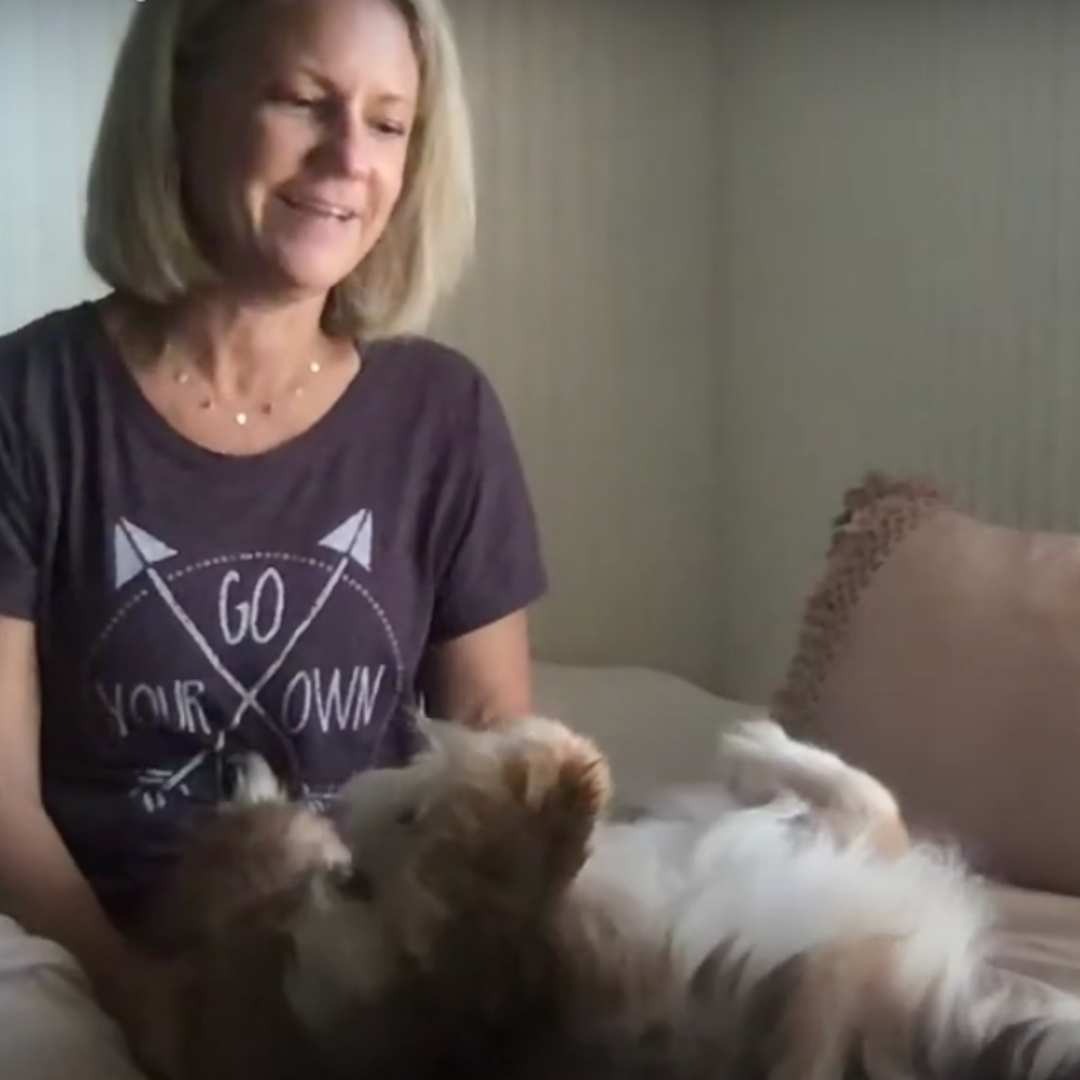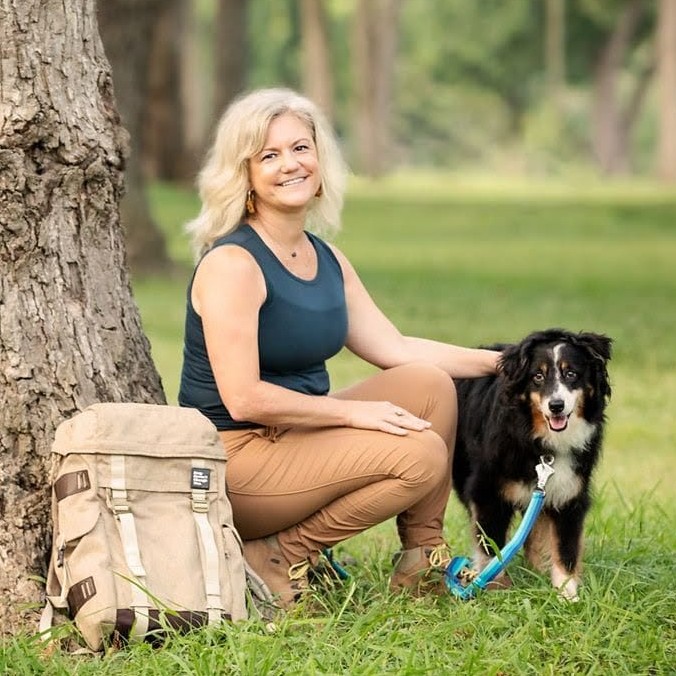Learn how to do one of the cornerstone techniques of therapeutic massage for dogs with your dog: the kneading stroke.
Follow along with your dog as I demonstrate the kneading stroke with my dog Daisy in the video below. As you can see from my dog's reaction to knowing it's massage session time, your dog's body language will tell you how much your pup loves the touch and connection with you after even the first time.
Why the kneading stroke in dog massage works
The kneading stroke is one of the most valuable and versatile canine massage techniques for your dog's health - to increase circulation, alleviate muscle tension & knots in muscle tissue, and relieve sore muscles, among other good things.
It's a versatile stroke for a full body massage and a range of health issues, since kneading can be done with gentle pressure or more deeply like trigger point therapy to reach underlying tissues, depending on what's best for your dog's body.
In either case, you're using gentle motions to give your dog the wonderful health benefits your individual dog needs from your massage sessions.
Your Dog's Plan
Stop! Don't read this long article. Instead, get everything you need to know, including all advice on Massage, in a customizable step-by-step plan for your dog created by our community of certified trainers and nutritionists.
A regular massage for your dog using the kneading stroke helps:
- Stimulate circulation
- Warm muscles
- Relax tight muscles
- Release and break down toxins in muscles
- Improve suppleness and elasticity through the stretching and compressing of tissue
- Provide pain relief
- Reduce stress
Plus, the kneading stroke feels good to your pup, and since massage is all about comfort and connection with your dog, being able to give your dog a therapeutic massage that also feels great is a wonderful bonus.
How to give a dog massage using the kneading stroke
#1: Get situated & grounded
As always when massaging your dog, find a soft spot where your dog can feel comfortable and take a moment to ground both of you. Then gently roll your dog over on one side and get started.
#2: Work your thumbs in a circular motion
Kneading is a deeper technique, more of a deep tissue massage, than the long strokes of effleurage which we learned in the previous guide. It's still a gentle massage that should feel soothing to your dog and not invasive at all as you massage your dog.
With kneading, you're using your thumbs one over the other, or side by side, in a circular motion (you can visualize it more easily by watching my quick video below).
Massage
Interested in Massage? Follow topics you're interested in to customize your dog’s step-by-step plan so it's most helpful and tailored to your dog when you're ready to get started.
#3: Work a full side top to bottom to stay calm & easy
Most dogs prefer to stay relaxed on one side while you work top to tail area on that side before flipping to the other. But it's your choice if you and your dog want to focus on your dog's ear on one side then the other or both of your dog's shoulders or both front legs, for example, and continue massaging by switching sides each time.
#4: Tune into your dog as you continue massaging
You know your dog, and you will get to know your dog's body even better as you observe when your dog leans into what you're doing for more relaxation or maybe pulls back a bit on a tender spot.
Listen to your dog
Continue massaging your dog with circular motions and light pressure, working into deeper pressure as guided by your dog's signals. You know your dog's certain injuries if any, and your dog's body language will let you know of any potential health problems where you should either lighten up, go deeper, or simply maintain an even massage pressure.
Your dog will let you know what massage techniques she or he loves most and you can tailor your massage according to that. Our Daisy loves her daily morning massage of her chest and front legs, her upper body pectorals, biceps, and deltoids, not to forget her hips and back legs; she knows I'll go deep with the kneading, really getting in with both thumbs to help alleviate her soreness and pain from inflammation there. It's become such a cherished morning ritual for her, she won't let me get the day started without it!
Note: You'll want to be sure to stick with a light, gentle pressure on your dog's neck -- avoiding the front near your dog's windpipe and esophagus.
Need more advice? Browse all guides in the Joint Support Channel on topics like Massage and Joint Pain - created by our community of certified experts for you and your dog.Joint Support
#5: Especially good for senior dogs & athletic dogs
This type of kneading massage, gentle compression stroke of the muscles and the skin over them is a special benefit for senior dogs who might have some arthritis. It's also great for athletic dogs who do a lot of jumping and need extra support for soft tissues and muscles by treating muscle knots or muscle spasms.
If your dog has any special conditions or injuries, consult your veterinarian before you begin a massage routine with your pup. Canine massage is now often prescribed by veterinarians to help with post-surgical recovery, or as part of physical therapies to improve mobility, reduce pain, or support rehab. Your veterinarian can be a great partner with you as you support your dog through massage.
Discover the therapeutic power of the kneading stroke in dog massage and how to create a soothing massage routine that supports your dog's health and well-being.
Choose how you'd like to view this guide's video.

Next up in the Joint Support Channel on Dogly
Now that you know how to give a dog massage using the kneading stroke, continue to the next step-by-step guide to learn how to massage your dog using the half moon stroke.
Or hop over to the Joint Support Channel if you'd like to ask a question in the Community discussion and start any of the other step-by-step guides.
If you ever need more personalized wellness guidance, please reach out!

